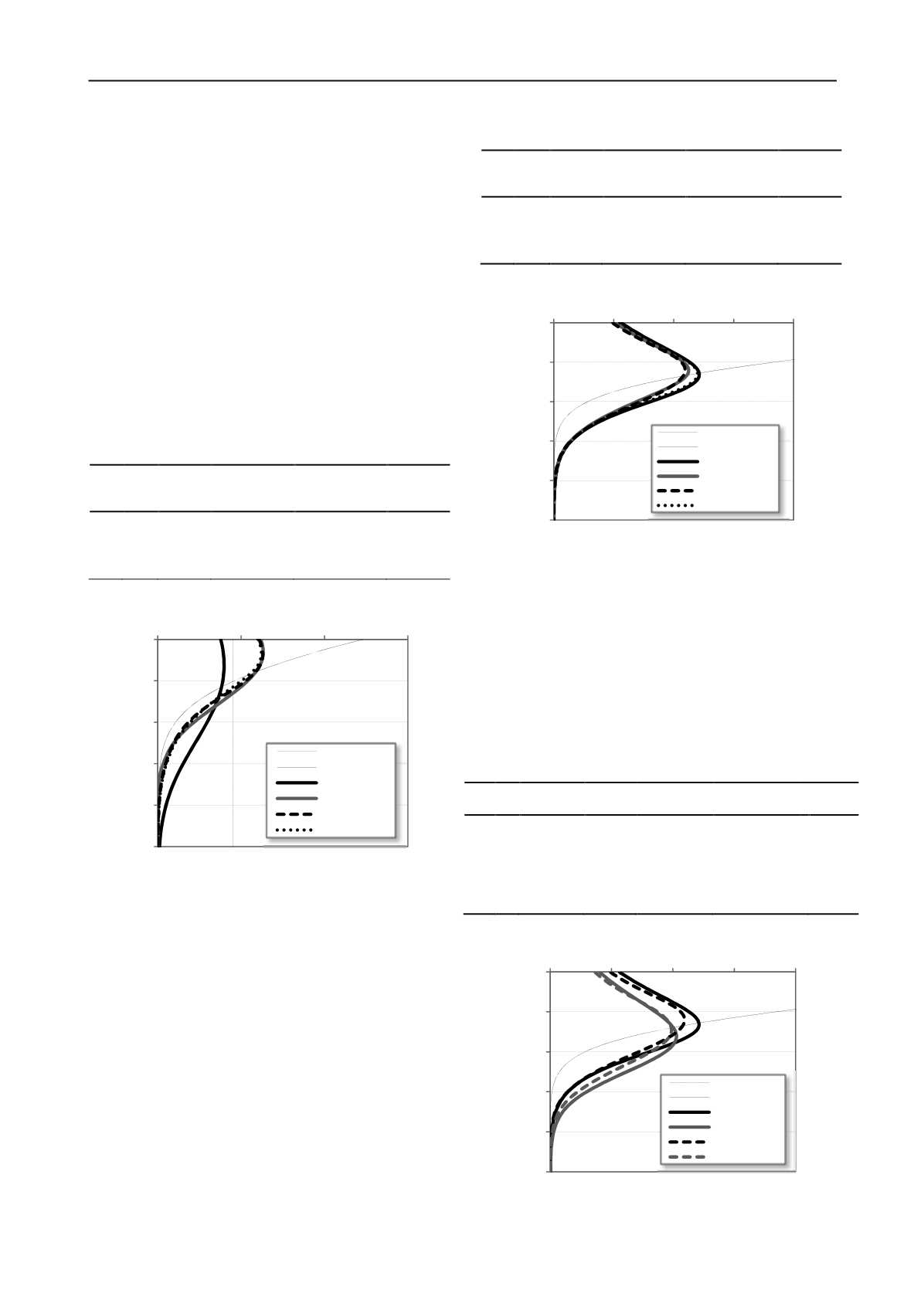
3051
Technical Committee 215 /
Comité technique 215
3 RESULTS AND DISCUSSION
3.1
Influence of root distribution
3.1.1
Lead Ion
In the case of lead ion (high retardation factor) it is known
that the remediation process is not efficient (Lugli and Mahler,
2012).
Modified roots caused the remediation time to exceed 120
months (test 2, 3 and 4 in Table 2). This happens because the
plume is substantially blocked due to the hydraulic conditions
(Figure 1). According to the Brazilian Law, this result is not
favorable. Despite of this, root modification implied an increase
in the amount of contaminant extracted in comparison with the
reference (test 1 in Table 2), This, together with the smaller
mobilization of the plume, can be evaluated as an improvement
from the environmental point of view. It could be identified that
the most favorable configuration corresponded to a root depth
of 3.5 cm: this value is less than the initial plume depth (5 cm).
Table 2. Transport and Pb
2+
uptake with different root distributions
test Ion
Root
max
depth
remediation
time [months]
contaminant
extracted/initial
plume
depth [cm]
1
Pb
2+
40
90
1.68%
12.23
2
Pb
2+
7
>120
1.74%
6.34
3
Pb
2+
5
>120
6.43%
7.04
4
Pb
2+
3.5
>120
6.95%
7.16
Figure 1: Pb
2+
plumes: initial and after 10 years of remediation with
different root depth
3.1.2
Zinc Ion
The same improvement observed in the previous paragraph
for lead ion was present also for a more mobile ion such as zinc
(Table 3). In this case all the indicators of remediation process
register a favorable trend: remediation time, amount of
contaminant extracted and plume depth. Differently from the
previous case, the reduction of the concentration values took
place in all the rizosphere (Figure 2). The most favorable
configuration, also for
Zn
2+
,
corresponded to a root depth lower
than the initial plume depth (23 cm).
Table 3. Transport and Zn
2+
uptake with different root distributions
test Ion
Root
max
depth
remediation
time [months]
contaminant
extracted/initial
plume
depth [cm]
5
Zn
2+
40
48
41.6%
35.87
6
Zn
2+
34,5
48
42.7%
36.09
7
Zn
2+
23
46
42.7%
35.76
8
Zn
2+
15
42
46.6%
35.65
Figure 2: Zn
2+
plumes: initial and after 10 years of remediation with
different root depth
3.2
Influence of water balance
The object of this paragraph was to verify if the effects due
to the addition of irrigation (Lugli and Mahler, 2012), persisted
in the case of the optimized root depth. These effects were
mainly:
enhanced contaminant extraction,
displacement of the contaminant plume downwards.
In Table 4 and Figure 3 it could be notice that both effects
are present also in the case of the reduction of root depth.
Table 4. Transport and Zn
2+
uptake with different root distributions and
presence of irrigation
test Ion irrigation
Root max
depth
remediation
time [months]
contaminant
extracted/initial
plume
depth [cm]
5
Zn
2+
0
40
48
41.6%
35.87
8
Zn
2+
0
15
42
46.6%
35.65
9
Zn
2+
330
mm/year
40
42
42.8%
36.60
10
Zn
2+
330
mm/year
15
36
48.2%
38.29
Figure 3: Zn
2+
plumes: initial and after 10 years of remediation with
different root depth and presence of irrigation
-10
-8
-6
-4
-2
0
0
1000
2000
3000
depth [cm]
Pb in soil [mg/kg]
limit
initial
root = 40 cm
root = 7 cm
root = 5 cm
root = 3.5 cm
-50
-40
-30
-20
-10
0
0
500
1000
1500
2000
depth [cm]
Zn in soil [mg/kg]
limit
initial
root = 40 cm
root = 23 cm
root = 15 cm
root = 34.5 cm
-50
-40
-30
-20
-10
0
0
500
1000
1500
2000
depth [cm]
Zn in soil [mg/kg]
limit
initial
root40cm
root40cm/irr
root15cm
root15cm/irr


